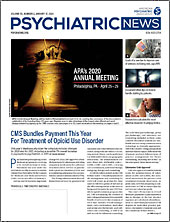Attempted suicide involving the nonopioid prescription pain relievers gabapentin and baclofen have risen dramatically in recent years, signaling a need for increased education as health professionals and patients incorporate these drugs into pain treatment, according to a study in Clinical Toxicology. Gabapentin is prescribed for nerve pain, and baclofen is prescribed for muscle pain and spasms.
“It’s well-known that opioids carry the risk of misuse and abuse, but medications that are often prescribed as alternatives also have risks that need to be better understood,” said lead author Kimberly Reynolds, M.S., D.N.P., of the University of Pittsburgh.
Reynolds and colleagues used data from the National Poison Data System to track adult exposures to gabapentin and baclofen for several years prior to 2017. Exposures to gabapentin alone or with other drugs increased 72.3% between 2013 and 2017. Among all gabapentin exposures, 70% were “intentional,” defined as attempted suicide, misuse, abuse, or unknown intent. The vast majority of intentional exposures—81%—were attempted suicide. This represents a 61% increase in suspected attempted suicides involving gabapentin over a five-year span, the authors reported.
From 2014 to 2017, exposures to baclofen alone or with other drugs increased 36.2%. Among all baclofen exposures, roughly 69.5% were intentional. Among intentional exposures, roughly 76% were attempted suicide. This represents a 40% increase in attempted suicides involving baclofen over a four-year span.
“Because the majority of intentional exposures [to these drugs] were suicide attempts, it may be that patients who are prescribed these drugs are also more likely to have mood disorders, as pain and psychiatric conditions often coincide,” Reynolds told Psychiatric News. “Health professionals who prescribe these drugs should take care to screen their patients for substance use disorders, mood disorders, and suicidal ideation.”
Likewise, psychiatrists should screen their patients when medication reviews reveal the patients have recently been prescribed gabapentin or baclofen by other health professionals, and educate their patients accordingly, Reynolds added.
“These medications can be used safely and effectively when taken correctly. Raising awareness and educating [patients] on the risks of these medications can help ensure that they are taken in a safe manner,” she said.
Elie Aoun, M.D., a general addictions and forensic psychiatrist at Columbia University and vice chair of APA’s Council on Addiction Psychiatry, agreed and added that psychiatrists who encounter patients who take these or other pain medications should become more active in the treatment of their patients’ pain.
“Psychoeducation and specialized psychotherapies for pain are an important component of pain management,” said Aoun, who was not involved in the research. “Even though the psychiatrist is not primarily a pain doctor, the specialty services they provide will change a patient’s experience of pain. A lot of the medications we use as psychiatrists prove to be effective for the treatment of pain.”
He noted that while gabapentin can help patients dealing with co-occurring anxiety and pain, a serotonin and norepinephrine reuptake inhibitor such as venlafaxine or duloxetine may be preferred when treating patients with co-occurring depression and pain.
This study was not supported by outside funding. ■
“Trends in Gabapentin and Baclofen Exposures Reported to U.S. Poison Centers” is posted
here.

